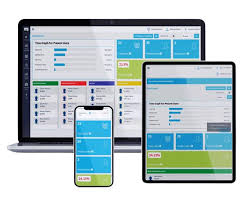The rise of remote work has revolutionized the modern workplace, offering flexibility and a wider talent pool for businesses. However, managing a remote workforce comes with its own set of challenges, including ensuring productivity, maintaining team cohesion, and monitoring performance. Remote work monitoring software has become an indispensable tool for addressing these challenges, providing organizations with the insights and control needed to effectively manage their distributed teams. This article explores the features, benefits, and importance of employee remote work monitoring software in today’s business environment.
What is Remote Work Monitoring Software?
Remote work monitoring software is designed to track and manage the performance and productivity of employees working from locations outside the traditional office. These tools utilize a variety of technologies, including time tracking, activity monitoring, and data analytics, to provide employers with real-time insights into employee work habits, task progress, and overall productivity. The goal is to ensure that remote employees are working efficiently and contributing to organizational objectives while maintaining flexibility and trust.
Key Features of Remote Work Monitoring Software
- Time Tracking: Accurate time tracking is a core feature of remote work monitoring software. It records the amount of time employees spend on various tasks and projects. This helps in assessing work hours, managing workloads, and ensuring fair compensation.
- Activity Monitoring: These tools track application usage, website visits, and keystrokes to provide insights into how employees are spending their time. Activity monitoring helps identify potential distractions and inefficiencies, allowing managers to address issues promptly.
- Performance Analytics: Remote work monitoring software offers detailed analytics and reporting on employee performance. Businesses can generate reports on productivity metrics, task completion rates, and project progress, aiding in data-driven decision-making.
- Task Management: Integrated task management features enable managers to assign, track, and prioritize tasks. Employees can view their assignments, update their status, and report progress, which enhances workflow management and accountability.
- Screen Capture and Recording: Some monitoring software includes screen capture and recording features, which provide a visual record of employee activities. This can be useful for reviewing work processes and ensuring adherence to company policies.
- Communication Tools: Effective communication is crucial for remote teams. Many monitoring tools offer built-in communication features, such as chat and video conferencing, to facilitate real-time interaction and collaboration among team members.
- Integration Capabilities: Remote work monitoring software often integrates with other business systems, such as project management platforms, HR software, and productivity tools. This ensures a seamless flow of information and enhances overall efficiency.
- Compliance and Security: Ensuring compliance with data protection regulations and maintaining security are critical. Monitoring software often includes features for secure data handling and adherence to privacy standards.
Benefits of Remote Work Monitoring Software
- Enhanced Productivity: Its providing insights into how time is spent and identifying inefficiencies, remote work monitoring software helps businesses optimize workflows and improve overall productivity.
- Improved Accountability: Tracking and reporting features increase accountability by offering a clear record of employee activities and performance. This helps in setting clear expectations and evaluating contributions objectively.
- Better Resource Management: Monitoring software allows managers to allocate resources more effectively, manage workloads, and ensure that tasks are completed on time.
- Informed Decision-Making: The data and analytics provided by monitoring software enable businesses to make informed decisions based on performance metrics and productivity trends.
- Increased Transparency: Transparent tracking and reporting foster trust between employers and employees. It ensures that performance is measured fairly and that employees are recognized for their contributions.
- Enhanced Collaboration: Communication tools and task management features improve collaboration among remote team members, ensuring that everyone is aligned and working towards common goals.
- Data Security and Compliance: Monitoring software helps maintain data security and compliance with regulatory requirements, protecting sensitive information and ensuring that business practices adhere to legal standards.
Conclusion
Remote work monitoring software is a vital tool for managing and optimizing remote teams. By providing real-time insights into employee activities, performance, and productivity, these tools help businesses navigate the complexities of remote work while maintaining flexibility and trust. Embracing remote work monitoring software not only enhances efficiency and accountability but also fosters a more collaborative and productive remote work environment. As remote work continues to shape the future of business, investing in the right employee monitoring tools will be key to achieving organizational success.
